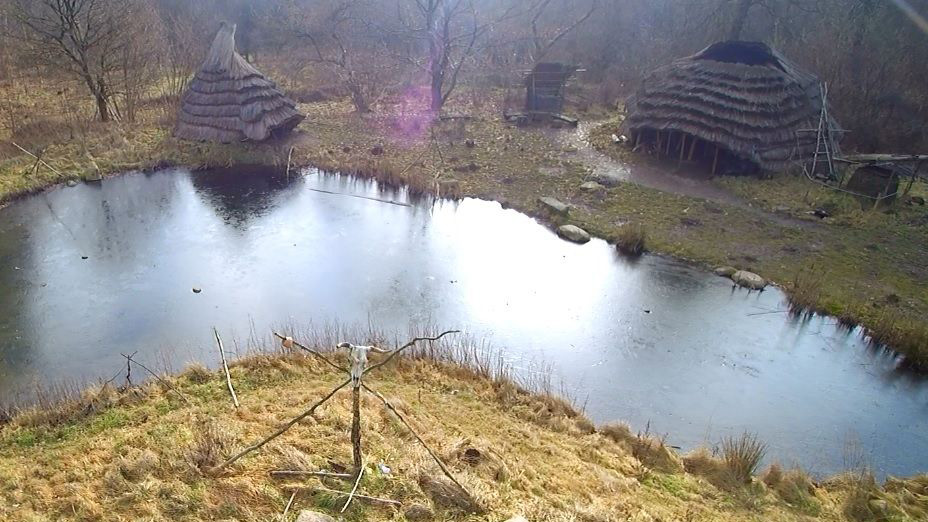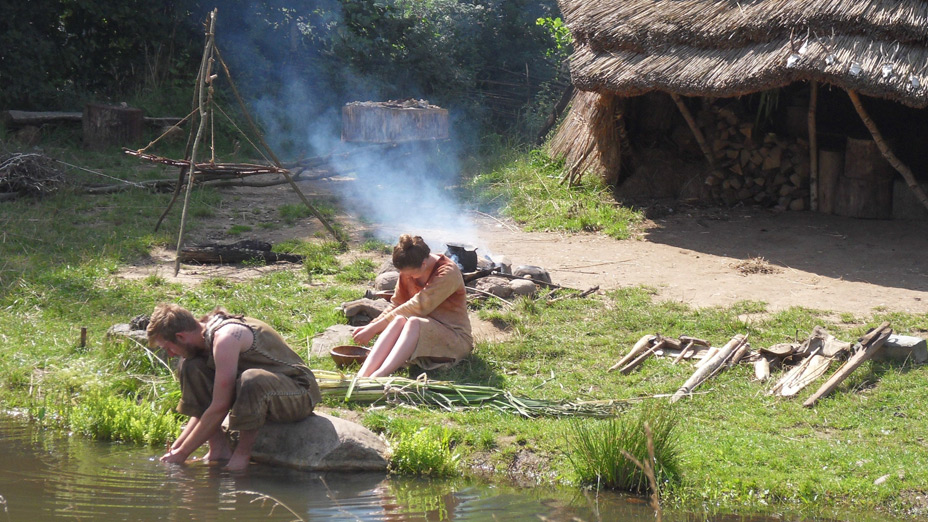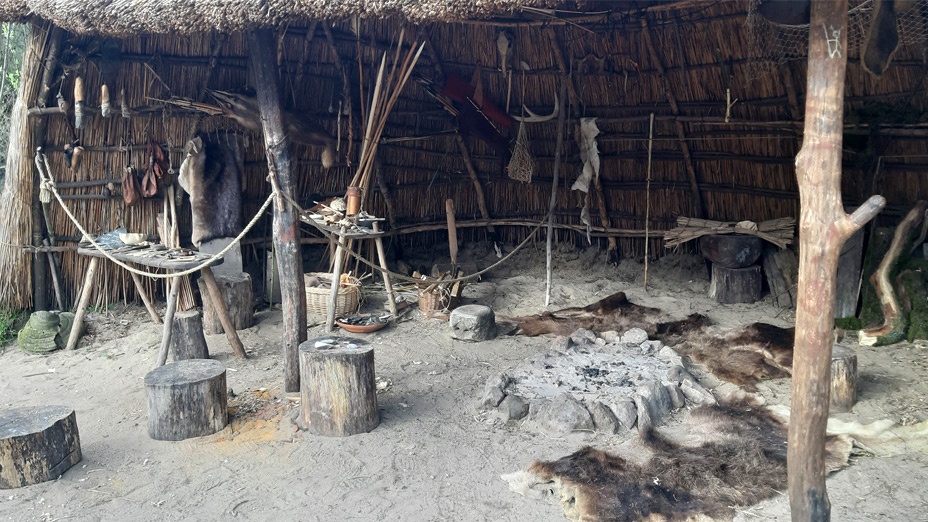Mesolithic Hut

Name of the building in the museum in English: Mesolithic Hut
Name of the building in local language (as used in the museum): Mittelsteinzeitliche Hütte
Local Language: German
Type of building:
Reconstruction (a new building, based on either historical or archaeological sources but without using original substance)
Museum where the building is presently located:
Steinzeitpark Dithmarschen (DE)
Please select extra information below:
The original building or its remains: Source and Inhabitants
Source Material
Name of the location: Hartmannsdorf 26 | See Google Map below
Address: A 10 (Motorway), crossing A 12 | Spreenhagen - Hartmannsdorf. D - 15528 | Germany
Organisation responsible for in situ excavation:
Brandenburgisches Landesmuseum, Brandenburg | Germany | Website
Name of the person responsible for the excavation: Stefan Wenzel
Role of the person documenting: Archaeologist
When the excavation took place: 1997
Source(s): Relevant academic literature (2.25 MB) | Plan of the camp
Stefan Wenzel, 2009, Behausungen im Späten Jungpaläolithikum und im Mesolithikum in Nord-, mittel- und Westeuropa. Monographien des Römosch-Germanischen Zentralmuseums, Bd. 81. Mainz. | Mesolithic Hut /Hartmannsdorf 26: pages 103 – 117.
52.34956, 13.83073
Time and Inhabitants
The historical /archaeological time period of the original building is:
Mesolithic
The original building date / date of first construction of the building is:
6000 BC
Cultural group is known as:
Kongemose Culture
Is the information about the original building's owners / users / inhabitants known?
No
About the original building
The original building was:
Part of a settlement
If part of a settlement, what is the original building's environment:
Household / homestead
What was the name of the household?
Unknown
What was the location of the original building within the household?
Unknown
The original function of the (original) building was:
Residential
If the original building was residential, the primary type was:
Workers house
Has the building's function of use changed through its history?
No
The building in the museum: Basic facts and Construction process
The importance
The reason to present this building in the museum is:
The building is a prime example of the historical characteristics of its time, The building is a prime example of the architectural characteristics, The building is of technological interest
Please explain the unique historical characteristics:
In mesolithic Times the building of semi-permanent hut structures with light weighing materials were typical.
Please explain the unique architectural characteristics:
Building Tradition of using light weighing natural materials from the region to construct (mostly) round hut structures
Please explain the specific technological interest:
The building technique with wattle walls and reed roofs.
The reconstructed building was build on the site of the archaeological feature:
No

The location in the museum
Registration number / name / inventory number of the building: Meso 1
Location in the museum: In the area of the mesolithic hut settlement (open-air area)
The building in the museum is: Part of a household
The household is: A reconstruction of the original household
The name given to the household by the museum is: Mesolithische Siedlung
The current location of the building within the household is: On the edge of a small lake

Documentation of the Construction Process
Is the organisation constructing / rebuilding the building in the museum a RETOLD partner:
Yes
Name of the organisation conducting the construction / rebuilding:
Steinzeitpark Dithmarschen (DE)
Name of the person responsible for construction:
Werner Pfeifer
Role of the person within the organisation:
Educator
Process 1: Production of Stone Age Glue types, also for construction purposes | Relevant literature (63.54 kb)
Werner Pfeifer, Marco Claußen, 2015, Experiments on Possible Stone Age Glue Types, EXARC Journal 2025/04, available online: https://exarc.net/ark:/88735/10222 [Last accessed: 8 August 2024]
Significant diversion
Is there a significant diversion in the construction from the original:
No
Are materials, techniques or tools diverging from historical/archaeological accuracy?
No





